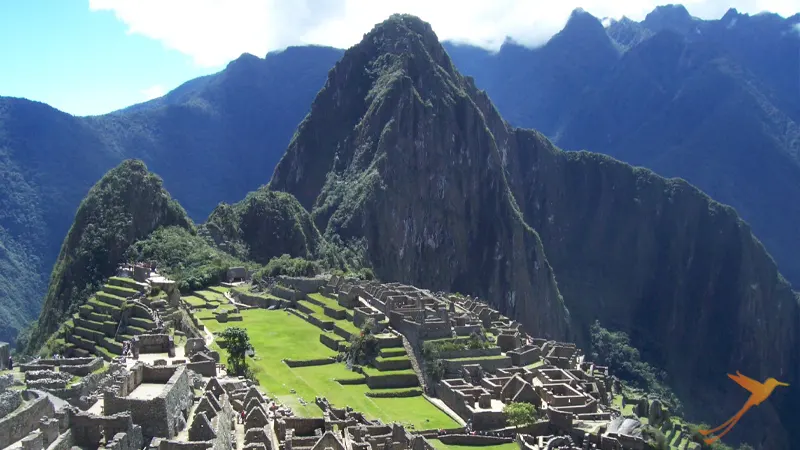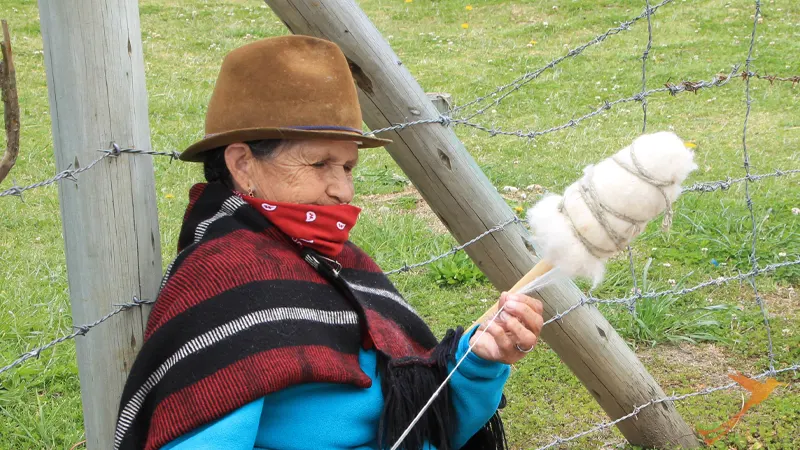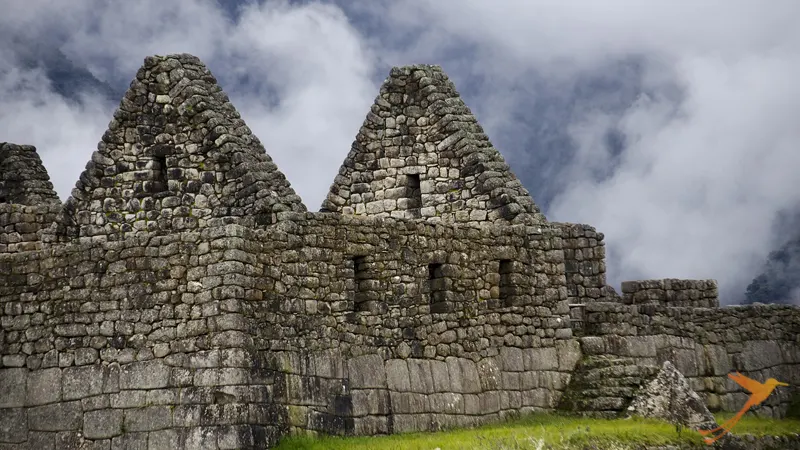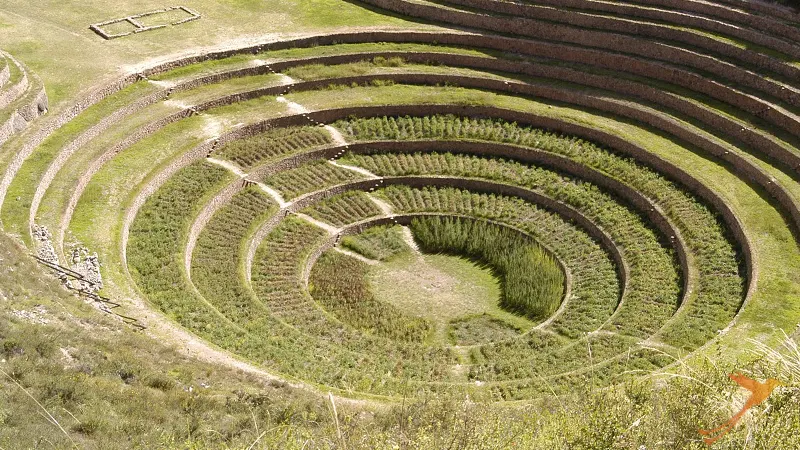

As soon as you spend even five minutes searching about South America, you will immediately come across the word “Inca” several times, often without any further explanation. So you naturally ask yourself: “Inca, what is that?”. Most people probably know that they are an indigenous, pre-Columbian nation. But do you know anything about their origin, their rulers, their beliefs and gods or their culture? No? Then I would like to answer all your questions in this blog. The Incas were very powerful and impressive people at the time.
Origins
No one knows exactly where the Incas came from. Scientists suspect that the Inca people originated in the Amazon lowlands. This is the boring, scientific story of their origins. According to the legend, however, the Inca originated from the sun god Inti. He is said to have sent his children Monco Cápac and his sister Mama Occlo to earth with the task of improving the world. The legend says that he looked with compassion on the lives of people at that time and instructed his children to teach mankind tolerance and kindness, as well as livestock breeding, agriculture, crafts, religion and laws. The Sun King’s children are said to have been born with a golden rod on the Lake Titicaca in Peru. They were to establish their residence where they could easily stick the rod into the ground. They found a suitable place in Qusqu (today’s Cusco) around 1200 AD. and this became the capital of the Incas, from where the people steadily expanded over the next 300 years.
Territory
The territory of the Incas stretched from what is now Colombia through Peru down to Chile and Argentina, and covered an area of over one million square kilometers. Their state is still considered one of the largest and most powerful states in South America and the largest pre-Columbian empire that ever existed. The Incas were very advanced for their time. They built an impressive road system with a total length of 40,000 kilometers with two main roads running from south to north. The first four Inca rulers only had the goal of ruling over the other tribes and peoples living in the valley of Cusco. It was only later that the area under their rule was steadily expanded.

Governance
Inca reign was very well organized. Their head of state was the king, who at the beginning is said to have been the son of the sun, Manco Cápac. The name Inca was actually only given to the ruler, but was later applied to all people living in the Inca Empire. At their peak at the end of the 14th century, the Incas ruled over 200 ethnic groups, 250 different peoples, 10 million people and an area of one million square kilometers.
But how could they spread so quickly? The tribes that the Incas wanted to rule had two options. Either they submitted voluntarily and were granted various benefits in return, or they went to war, which the Incas usually won. When a ruler died, his son came to the throne and inherited all his father’s power. What he did not inherit, however, were the territories, which still belonged to the previous ruler or his mummy. He therefore had to conquer his own territories. The rulers were regarded as divine beings and were the mediators between the people and the gods. Each ruler only wore his garments once, after which they were considered sacred. In total, the Incas ruled for more than 300 years from the 13th to the 16th century.

Beliefs and gods
The Incas described themselves as children of the sun. In addition to the sun god, they also worshipped other gods, such as the creator god Viracocha and the earth goddess Pachamama. They also honored nature and their ancestors. Human sacrifices were not uncommon among the Incas; these were usually very young and some have survived to this day in the form of mummies. It was an honor for the parents if their child was chosen. The victims were prepared for months before the sacrifice and were given fine clothing and elegant headdresses.
Hair samples also revealed that they were regularly given alcohol and coca leaves before they died. They were then placed alive in graves and died in their sleep due to the cold and the alcohol in their blood. The Incas also celebrated many festivals in honor of their gods, the most important of which was the winter solstice festival. The Incas often built their sanctuaries in places that were difficult to access, but it has not yet been possible to find out why they did this.
Culture
The Incas were an indigenous urban culture with their own language, Quechua. They did not have an alphabetic script, but they did have the Quiptus, a so-called knot script. This was a system of threads and knots in different arrangements and different colors. The script was mainly used as a system of accounting or for compiling statistics. However, not many Incas knew how to write this script and those who did were considered some of the most important men in the state.
The people were very rich in gold, which they used to decorate their temples and produce various works of art. However, it was not used as money. Their economic system was based on mutual obligations and bartering. In their free time, the Incas often manufactured instruments such as the quena, a flute made from bamboo, reeds or llama bones. Their clothing consisted of various colorful fabrics. It was decorated with various geometric patterns and communicated the status and origin of the owner. The Incas lived in relatively large cities and built various impressive palaces, fortresses, temples and bridges. They also had a sophisticated irrigation system and a well-organized planned agriculture. The Incas used terraced farming to save water and lived mainly on quinoa, maize and potatoes. Meat, on the other hand, was very rare.

Collapse
Although there are still an estimated 13 million descendants of the Incas today, most of whom live in Peru, their reign is long gone. But how did it come about that such a large and powerful people could lose their position as rulers? The collapse of the Incas began with the death of the eleventh Inca king in 1527, when his sons Atahualpa and Huáscar fought over who would inherit the throne, leading to a civil war. The mothers of the two sons belonged to two different ethnic groups, who each fought for the son of their group in the civil war.
After Atahualpa won the war, the Spanish conquistadors invaded Peru in 1532. Although they were clearly outnumbered, they won the battle. This was mainly due to their technical and tactical progress, as the Incas had neither firearms nor steel blades, let alone horses to ride. In addition, the Incas were weakened after their civil war and epidemics such as smallpox, measles and various forms of influenza were rampant. One year after the Spanish invasion, the Inca king was executed and the Spaniards took Cusco. Some tribes joined the Spaniards without resistance, others fought to the bitter end. Much of the Inca culture was destroyed, as the conquistadors stole not only gold and art but also much of the culture and imposed penalties on some cultural activities.

Summary
To summarize everything in one paragraph, here is a brief conclusion: The Incas were a powerful and advanced nation that built an impressive empire in South America. Their culture was characterized by advanced architecture, a sophisticated economic system and a deep belief in various gods. The Incas developed complex administrative and irrigation systems and left behind a significant legacy in the form of their architecture and culture. The collapse of their empire was accelerated by internal conflicts, the arrival of the Spanish and the devastating effects of European diseases. Despite their fall, the legacy of the Incas lives on, both in the culture and in the descendants who still live in the region today. If you would like to discover this heritage and delve deeper into the Inca empire, please contact us and we will help you create a journey back to the time of the Incas.







